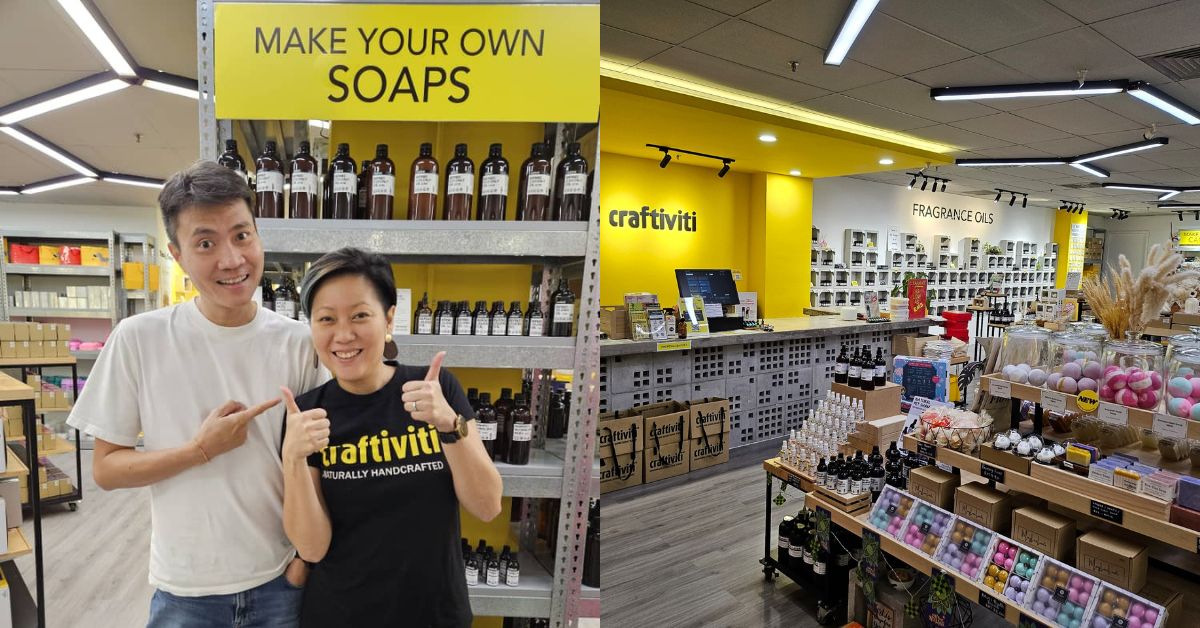Paul Yang is a man of many talents.
A self-professed passionate musician, he has attained a flying license and even contemplated on becoming a commercial pilot.
His ambition however, was to be a cinematographer. The filmmaking major owned a videography company and used to shoot commercials early on in his career.
As a creator, he has always been interested in exploring the many ways in which emerging technology and art can come together, which led him to create the Lomotif app.
“I wanted to create a platform which provides artists with tools that can ease creating good quality videos, while simultaneously enhancing their skills and helping them monetise their talent,” said Paul.
When he was studying Communications and New Media at the National University of Singapore, he also took up Game Design at the Massachusetts Institute of Technology (MIT).
“My avid interest and expertise in video creation and game designing drove me to become a product designer. In addition to conceptualising the Lomotif app, I wrote the code and created the logo as well,” he added.
An App That Rivals TikTok?

Established in 2014, Lomotif was created to capitalise on the increasing demand for online content viewing, which was getting increasingly popular among Gen Z and millennials.
“Lomotif is a short-format video-sharing social networking platform which aims to democratise video creation and sharing,” said Paul Yang, founder and CEO of Lomotif.
“It enables users to create, share, and watch short music videos with friends and has patented technology for mixing and video editing.”
Essentially, creators can ideate, plan and create videos using a single app.
When asked if it’s accurate to call Lomotif a TikTok rival, Paul said matter-of-factly that they are technically competitors as both function and operate in the same industry.
“But there is no contention with the brand,” he stressed. “The industry is big enough that all of us can co-exist.”
Regardless, he is proud that Lomotif has been recognised as a “strong rival to TikTok and Kuaishou in many international markets.”
So what’s unique about Lomotif that makes it different from other video editing and sharing apps?
Lomotif’s biggest strength comes from its creator tools and technology. Creators of all hues — from nano creators to top celebrities — have used Lomotif to share their unique stories in interesting and distinct ways.
We have been fortunate enough that our features and tools were appreciated so highly, leading to organic growth and increased reach, without spending any money on customer acquisition.
– Paul Yang, founder and CEO of Lomotif
According to Paul, celebrities like Alicia Keys, Luh Kel, Sheff G, among others, have used Lomotif as a platform to organically connect and engage with their fans.
“Music labels like Empire and Cinematic have applauded the responses their artists have received on our platform. Our Remix feature, our atomic clips strategy, our deep connection with the communities we are present in all make us stand apart from the rest,” he added.
Recently, Lomotif partnered with LiveXLive to stream their Annual Global Music Festival – Music Lives 2021 featuring a massive line-up of nonstop live performances by global icons such as Pitbull, John Mayer, Wiz Khalifa, and Zac Brown Band amongst many others.
The partnership marked the first time a concert or event of such scale has been live-streamed to audiences in a vertical video format.
“Given the ease of naturally shooting and watching videos on a mobile device in a vertical format, without the extra steps of turning it et cetera, we believe vertical is going to be the video format of tomorrow, and are optimising our tools to enhance this for a seamless user experience,” said Paul.
Couch Surfing In San Francisco For 2.5 Years
The initial prototype of Lomotif was developed with a few others in Singapore’s tech start-up ecosystem BLOCK71.
The team later decided to take the idea abroad to San Francisco — what was initially supposed to be a month-long trip became 2.5 years instead.

I spent over two years couch surfing in San Francisco, speaking to users directly and fine-tuning the product personally to be of better utility to them, while also seeking investors who were more receptive to bold and innovative ideas like ours. Without the many risks we took, Lomotif would not be where it is today.
– Paul Yang, founder and CEO of Lomotif
In 2016, Lomotif became the first local, non-Stanford startup to be accepted into StartX, an accelerator backed by Stanford University. They competed with students from the likes of Harvard, Stanford and MIT, which forced them to “set a higher bar” in order to succeed.
Paul refused to comment on funding figures, but shared that Lomotif has seen an uptick in terms of global user traction and reach.
“In the last three years, Lomotif has become one of the fastest-growing video-sharing social networking platforms,” said Paul.
“Since our launch, we have increased our average monthly community by over 400 per cent. Marking a milestone, we have witnessed over 10 billion atomic clips (user-generated content) which have further been used to create over 740 million videos on the platform.”
The platform has also garnered 120+ million total lifetime creators, and 300+ million video views on the platform per month.

While many businesses have suffered during Covid-19, the pandemic has presented Lomotif with a silver lining, with the short-video format industry growing at an unprecedented rate.
“In a video-first world, something that was originally appreciated only by the Gen Z, is now starting to be adopted by more people across generations and cultures,” noted Paul.
Despite its successes, Paul admitted that building a social media company has been challenging in a market like Singapore, which has been slower to adopt new media technologies and trends, compared to markets like Brazil or China.
Lomotif Was Recently Sold For US$125M

Global media and entertainment company ZASH recently announced the acquisition of a majority controlling stake of 80 per cent in Lomotif.
ZASH co-founders include Ted Farnsworth, financier and former MoviePass Chairman; early Musical.ly (now TikTok) investor Jaeson Ma; and early Triller visionary and board member, Vincent Butta.
It is reported that they will pay about US$125 million for the stake, which marks one of the biggest exits by a local tech startup in recent years.
However, Paul remain tight-lipped about the financial details as the acquisition process and legalities are still underway.
The Lomotif deal will be closed concurrently with the closing of ZASH’s merger with NASDAQ-listed Vinco Ventures, a merger and acquisition company focused on digital commerce and consumer brands.
When asked about changes post-acquisition, Paul said that there won’t be much changes in terms of work processes.
I will continue to lead Lomotif, but now with the acquisition, this opens up more international markets for us to expand into.
This acquisition also helps us to invest in promotional activities – something that will be new for the brand as our growth has been largely powered by word-of-mouth among our user community.
– Paul Yang, founder and CEO of Lomotif
With ZASH’s acquisition, they are the only NASDAQ:BBIG-listed short video platform, which means that North America will become a key growth territory for them.
According to Paul, Lomotif already has a significant presence in Brazil, Western African region and Russia.
He is also looking to expand Lomotif further in Latin America, South America and Europe because he sees a huge potential in consumer-driven short-video format in these regions.
Additionally, with Lomotif’s strong following in Asia, it will also continue to strengthen its presence here, with a strong emphasis on India followed by Indonesia.
For its next phase of expansion, Lomotif is working on enabling creators to distribute and monetise their original content through streaming channels with revenue-sharing options.
Lomotif has always been a “work in progress” since inception, said Paul.
“The one mission that remains consistent is our support for our creators. We started by empowering them with patented creator tools to create content within seconds, and expanded to allowing them to feature their creations and connect with other creators.”
Featured Image Credit: Lomotif / Alamy Stock Photo








